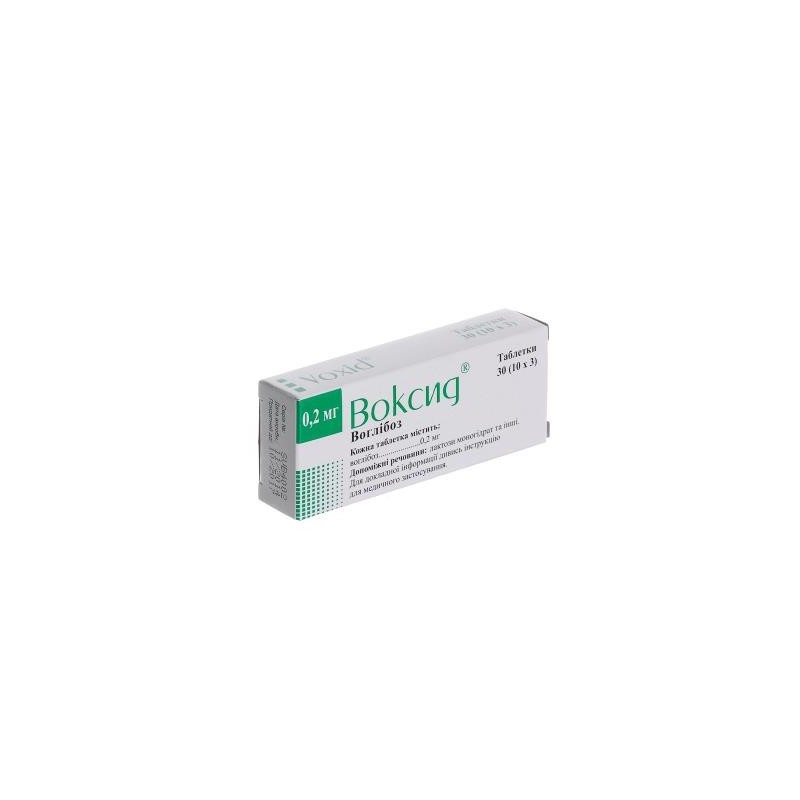



 Secure and encrypted payment processing
Secure and encrypted payment processing We ship to over 40 countries including the USA, UK, Europe, Australia and Japan
We ship to over 40 countries including the USA, UK, Europe, Australia and Japan Guaranteed refund or reship if you haven't received your order
Guaranteed refund or reship if you haven't received your ordervoglibose is an oral hypoglycemic agent, a competitive inhibitor of intestinal α-glucosidases (hydrolase class enzymes), which are involved in the breakdown of di-, oligo- and polysaccharides. inhibition of α-glucosidase activity slows down the breakdown of complex carbohydrates and glucose absorption, which results in a decrease in the postprandial level of glucose in the blood (postprandial hyperglycemia).
Voglibose does not affect β-glucosidase activity.
Pharmacokinetics Voglibose is slowly and poorly absorbed and rapidly excreted in the feces. To date, no metabolites of this substance have been detected in the blood and urine of a person. In animal studies, voglibose penetrates through the placenta and into breast milk.
The drug voxid is taken orally immediately before each meal, washed down with water.
Usually the initial dose of Voxid for adults is 0.2 mg 3 times a day. If the therapeutic effect is insufficient, the dose of the drug can be increased to 0.3 mg 3 times a day, provided that the disease is carefully monitored.
For elderly patients, the initial dose of Voxid® is 0.1 mg 3 times a day. If the therapeutic effect is insufficient, the dose of the drug can be increased to 0.2-0.3 mg 3 times a day, provided that the disease is carefully monitored.
Metabolic disorders: hypoglycemia.
From the gastrointestinal tract: sensation of bloating, flatulence, diarrhea, intestinal obstruction.
On the part of the hepatobiliary system: fulminant hepatitis, severe liver dysfunction, increased levels of hepatic transaminases (AsAT, AlAT), jaundice.
The oxide is used with caution in the following situations:
Limit the use of Voxid to patients who have been diagnosed with diabetes mellitus or impaired glucose tolerance.
Patients with diabetes who are shown a diet and / or exercise should be prescribed voglibosis only when the postprandial glycemia level within 2 hours after eating is 11.1 mmol / L or more.
Patients with diabetes who are shown a diet, exercise, oral hypoglycemic drugs or insulin should be given voglibosis only when their fasting blood glucose is 7.77 mmol / L or more.
While taking Voxid, it is necessary to carefully monitor the patients condition and constantly monitor the level of glucose in the blood. In addition, the continuous use of this drug plays an important role in achieving the therapeutic effect.
If after 2–3 months of continuous administration of voglibose (both mono- and combination therapy for diabetes mellitus) the hypoglycemic effect is unsatisfactory (postprandial glycemia within 11 hours after eating 11.1 mmol / l or more), then it is necessary to carry out a correction accordingly treatment.
If when applying voglibose (both mono-and combination therapy for diabetes mellitus), the hypoglycemic effect is satisfactory (postprandial glycemia within 2 hours after eating, 8.88 mmol / L or lower), you should stop taking the drug and observe the further course of the disease.
If you are intolerant of certain sugars, you should consult your doctor before taking this medicine, because the drug contains lactose.
Use during pregnancy or lactation. Oxide tablets can be prescribed during pregnancy and if it is suspected, only if the expected therapeutic effect exceeds any potential risk. The safety of the use of this drug in pregnant women has not been established.
It is advisable to avoid the use of voglibose when breastfeeding. However, if use is nevertheless necessary, breast-feeding should be discontinued.
The ability to influence the reaction rate when driving vehicles or working with other mechanisms. When using the drug, the occurrence of adverse reactions that can affect the ability to drive vehicles or work with mechanisms.
Children. Data on the use of voglibose in children are not available, therefore, the drug should not be prescribed in this age category of patients.
Combinations to be used with caution.
In case of overdose, the patient should consult a doctor.
In the original packaging at a temperature not exceeding 25 ° C.